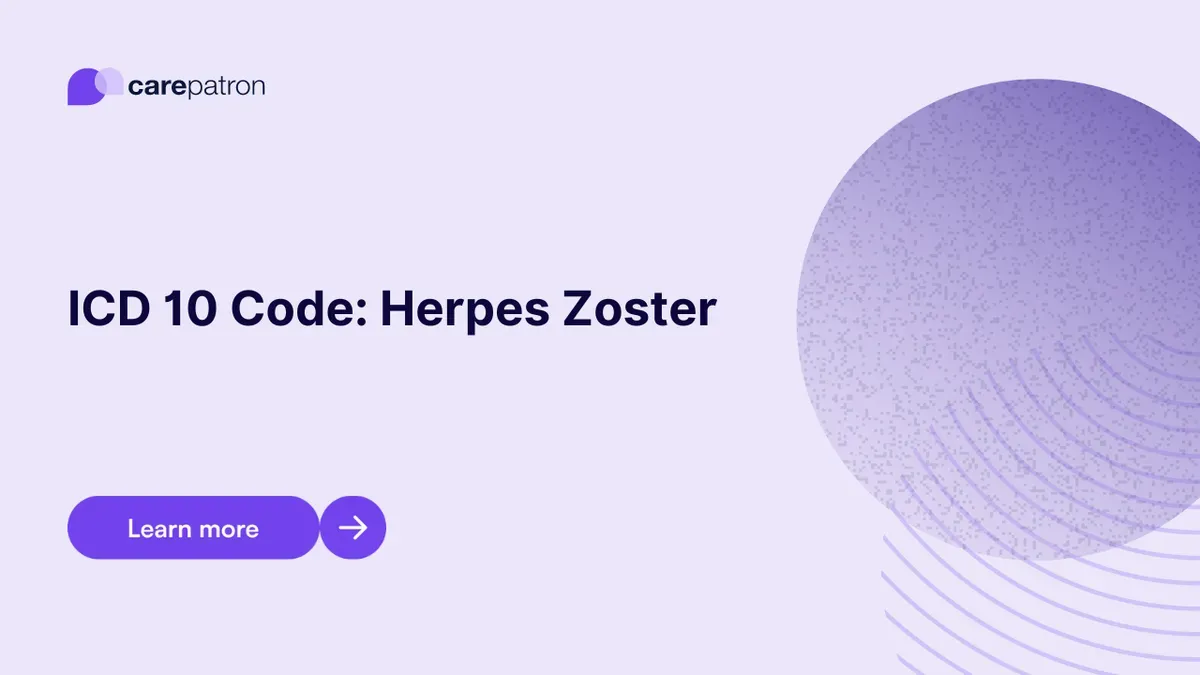
Herpes Zoster ICD-10-CM Codes | 2023
Read this short guide to learn about Herpes Zoster ICD codes you can use!
Use Code
Commonly asked questions
Not necessarily. However, if the Herpes Zoster forms blisters, the fluid in these blisters can cause other people who have never had VZV to be infected and develop Chickenpox.
Postherpetic neuralgia is one. This complication occurs once the rashes are gone. It’s characterized by persistent pain in the nerves of the affected area.
It can also cause skin infections.
They will administer antivirals and pain relievers to help reduce the duration of shingles and lessen the pain. They will also likely recommend taking the shingle vaccine to prevent it from reoccurring. The re-emergence of shingles in a person is rare, though.
EHR and practice management software
Get started for free
*No credit card required
Free
$0/usd
Unlimited clients
Telehealth
1GB of storage
Client portal text
Automated billing and online payments
